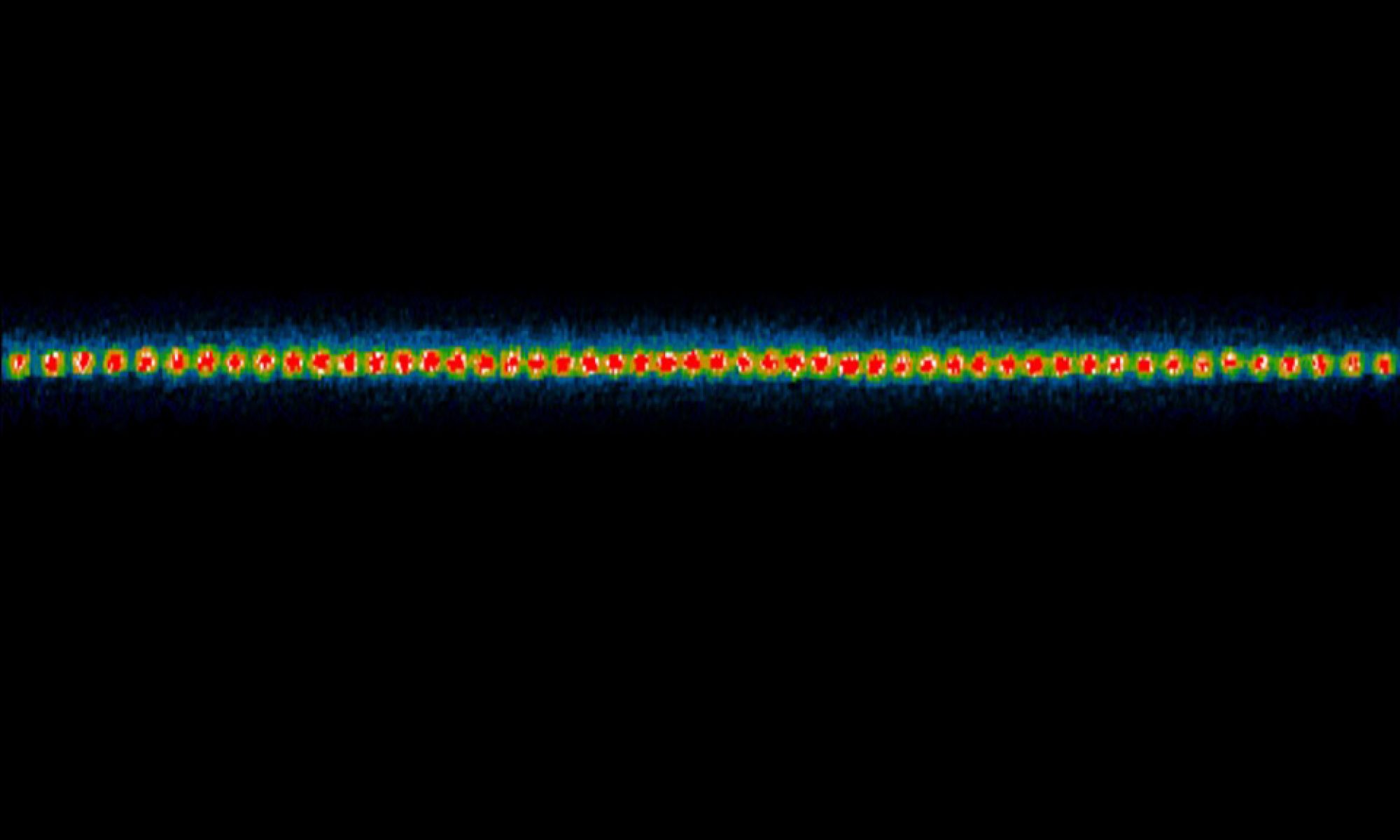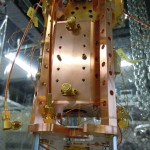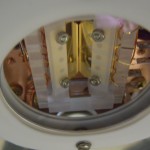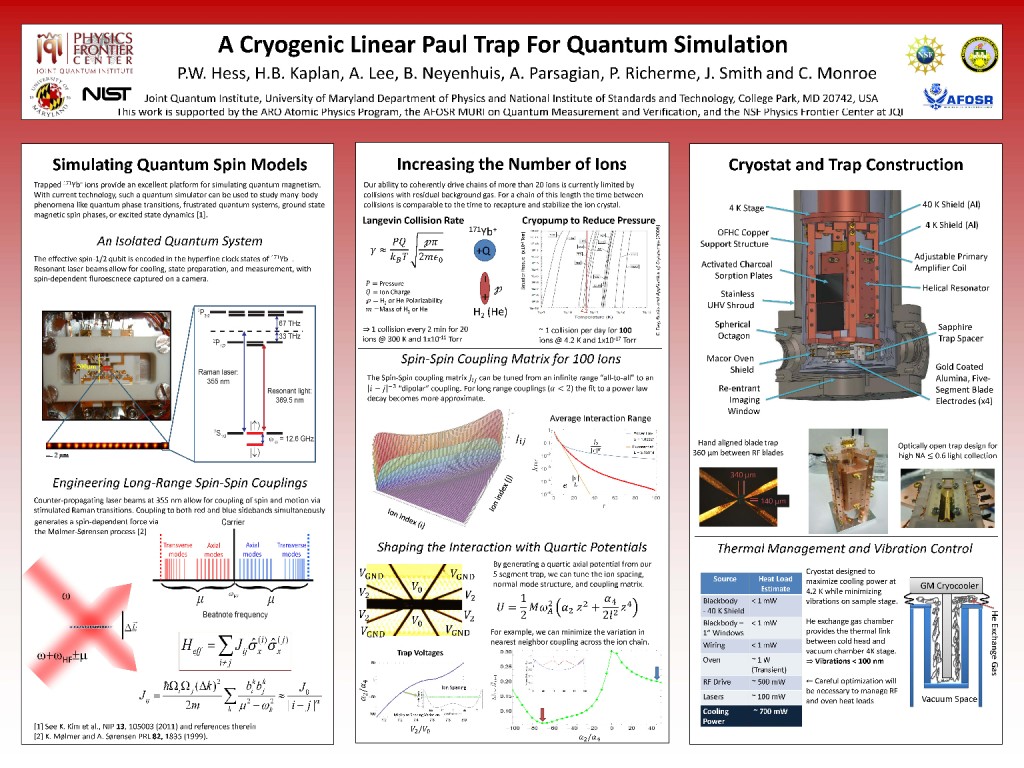The ability to simulate real quantum magnetic materials depends on an accurate representation of the size of the target system. When system sizes are limited to a few tens of spins, finite length and boundary effects can make comparison to condensed matter theory difficult. Larger systems can help us simulate complicated many-body dynamics that are beyond the reach of numerical calculations on classical computers, due to the exponential expansion of the quantum state space.
Scaling our quantum simulations to include more particles requires a new type of apparatus. We are currently constructing a cryogenically cooled ion trap to solve the problem of ion chain decrystallization due to collisions with background gas molecules. The substantial cryopumping provided by 4 Kelvin surfaces will allow us to reduce the residual pressure by several orders of magnitude below those achieved in room temperature UHV chambers. Such an improvement will allow loading of long ion chains of up to 100 Yb+ ions.
The trap is constructed from four custom machined “razor blades” which allow for enhanced optical access for ion imaging and laser beam addressing. Multiple electrode segments can be used to create higher order trapping potentials, allowing additional control over the ion spacing and mode spectrum.




